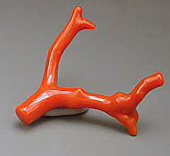

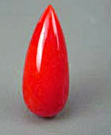
Other than shells and animal teeth, coral was one of the earliest jewelry materials enjoyed by our species. Neolithic amulets in red coral found in digs in Switzerland date back to 8000 BCE. Virtually every cilivization since then, which either lived in proximity to warm shallow seas, or had developed trade routes to such, has made enthusiastic use of this material.
Living corals are tiny, colonial, filter-feeding invertebrates which manufacture solid living quarters out of calcium carbonate or protein. It is the collective, vacated homes of previous generations upon which the living coral film grows, and which we harvest and make use of in jewelry and carving.
Historically the important gem corals have been divided into "calcareous" (stony) and "proteinaceous" (horny) types. At present, with these two traditional sources becoming scarce and demand, especially for inexpensive bead material driving the market, two other types ("sponge", and "bamboo" corals) are commonly seen.
When someone describes a lipstick or a flower as "coral" colored, what comes to mind is a slightly orangey medium red. Traditionally this color, which occurs naturally in the calcareous corals, was the standard by which the group was judged. The globally wide-spread calcareous group is made up of species whose colors range from white, pink, and peach to "coral" red. The highly desired, hot, vivid reds come primarily from the Mediterranean and the seas around Japan, and for these specimens the competition is vigorous.
They grow as branching structures which look something like a leafless tree, and in the rough, show minute parallel striations on their surface. Although rather soft by gem standards, they are reasonably tough and take a high polish. Natural colors are due to organic carotenoid pigments, but pieces of inferior color are sometimes dyed.



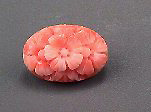

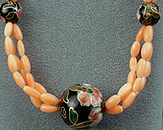
The other important group, whose houses are made of a tough, keratin-like protein called conchiolin or gorgonin, comprise the black and golden corals. Although not highly mineralized, the protein is very tough, so that properly prepared and polished pieces are near the equal of the stony types in durability and beauty, and sometimes exceed them in value. Colors range from black to dark brown to golden. The golden color is highly prized and can be natural, the result of injury or degeneration of the black coral organisms, or human-induced by bleaching with hydrogen peroxide. (After all, they are made of a hair-like protein).
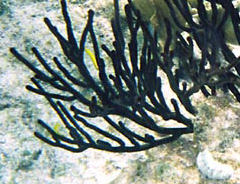
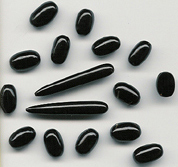
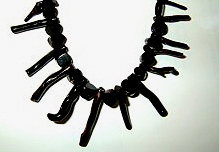
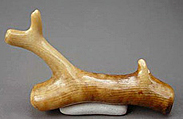
The blue and "sponge" corals are calcareous but with a much less compact structure than their pink and red relatives. As a result their texture is rough and porous and they take little, if any, polish. The natural colors are pinkish red with brownish areas, and grey blue, so they are usually dyed to improve their color, and/or resin impregnated to increase their durability.

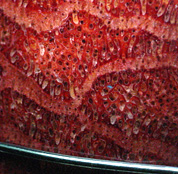
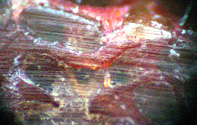
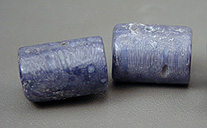
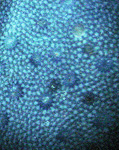
Bamboo coral, or "sea bamboo" has an interesting structure that explains its name. The coral skeletons consist of stretches of branch-like, stony calcium carbonate material, interspersed with joint-like regions of gorgonin protein. The natural color is creamy white with brown or black. Sometimes the harder sections are cut out and dyed to make small beads or cabs, while in other cases larger pieces are used which incorporate both regions and retain the banded patterning.

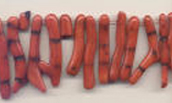

Coral gems with their hardness of 3 - 4 should be worn and cleaned gently. Warm water and mild detergent are best for cleaning needs, and daily wear rings or bracelets are risky. The calcareous types can be damaged by exposure to acids and the proteinaceous types should be protected from high heat and long exposure to water.
By far, the most valuable corals are the natural reds, blacks and golds. Fashions change in this regard, though, as the white and baby pinks were preferred in Victorian times. A good polish and freedom from blemishes is important and, of course, the artistry of the fashioning must be taken into account.
Some locales from which corals are obtained have been over-fished or environmentally degraded, leading to protective management of the stocks and scarcity of supply. Happily, in the future it may be possible to "farm" some types of corals to supplement our needs. There are pilot programs attempting this in Japan and Hawaii.